-
Immobilizing radioactive waste in glass for millions of years
How do you handle nuclear waste that will be radioactive for millions of years, keeping it from harming people and the environment? It is not easy, but researchers have discovered ways to immobilize such waste – the offshoot of decades of nuclear weapons production – in glass and ceramics.
-
-
Nanomaterials help solve the problem of nuclear waste
In the last decades, nanomaterials have gained broad scientific and technological interest due to their unusual properties compared to micrometer-sized materials. Nuclear fuels production, structural materials, separation techniques, and waste management may all benefit from more knowledge in the nano-nuclear technology.
-
-
Bacteria can help make underground nuclear waste repositories safer
It takes about two hundred thousand years for the radioactivity of spent nuclear fuel to revert to the levels of naturally occurring uranium. As a result, most research into the long-term safety of nuclear waste disposal focuses on processes that tick to a slow geological clock: the mechanics of the rock layers that make up the storage site or the robustness of the protective barriers in place that are engineered to contain the radiation. However, all these studies neglect one key factor: biology. Naturally occurring bacteria could consume pent-up hydrogen gas in nuclear waste repositories to prevent radioactive leaks.
-
-
Surprise finding could improve future handling of nuclear waste
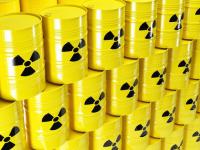
A researcher at the University of Manchester has made a surprise finding after observing variations of a chemical bond with a radioactive metal called thorium — and this newly revealed relationship could one day contribute to improving nuclear fuel management.
-
-
Risk of another Chernobyl- or Fukushima-type accident worryingly plausible
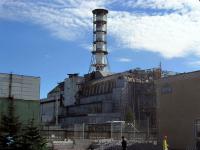
The biggest-ever statistical analysis of historical nuclear accidents suggests that nuclear power is an underappreciated extreme risk and that major changes will be needed to prevent future disasters. The researchers’worrying conclusion is that, while nuclear accidents have substantially decreased in frequency, this has been accomplished by the suppression of moderate-to-large events. They estimate that Fukushima- and Chernobyl-scale disasters are still more likely than not once or twice per century, and that accidents on the scale of the 1979 meltdown at Three Mile Island (a damage cost of about $10 billion) are more likely than not to occur every 10-20 years.
-
-
Nuclear forensics summer program trains students for a future in nuclear security
A sure sign of summer is the return of interns to the Lawrence Livermore campus. Students interact with premier researchers and access equipment and facilities not available anywhere else, while scientists lay groundwork for advancing their fields. LLNL runs an eight-week summer internship for students interested in nuclear science and its range of specialties — nuclear forensics, environmental radiochemistry, nuclear physics, and beyond. Together, these disciplines support the laboratory’s nuclear security mission through analysis of nuclear processes and properties.
-
-
Pro-nuclear countries slowest to make progress on climate targets
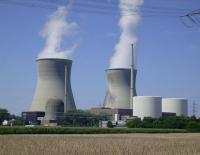
A strong national commitment to nuclear energy goes hand in hand with weak performance on climate change targets, researchers found. A new study of European countries shows that the most progress toward reducing carbon emissions and increasing renewable energy sources has been made by nations without nuclear energy or with plans to reduce it. Conversely, pro-nuclear countries have been slower to implement wind, solar, and hydropower technologies and to tackle emissions.
-
-
Reactor safety experts from Sandia help industry learn from Fukushima accident
Reactor safety experts from Sandia National Laboratories and elsewhere are sharing lessons learned in Japan’s Fukushima Daiichi nuclear accident and other severe accidents that pushed nuclear power plants past their limits. The safety experts seek to demystify what happens during an accident, to help engineers/operators learn what decisions they might need to make in the event of an accident at their plants, and to provide insights into the non-intuitive nature of accidents.
-
-
Belarus’s lax approach to nuclear safety raises fear of another Chernobyl
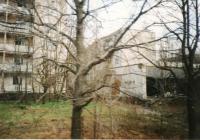
Thirty years after Chernobyl, the world’s worst nuclear accident, a series of mishaps at a nuclear facility in Astravets, in Belarus, has raised concerns over nuclear safety, especially in neighboring Lithuania. Vilnius, the country’s capital, is located less than thirty-one miles from Astravets. Lithuania, accusing Belrus of Soviet era-like lack of transparency, says it would work with the international community to block the Astravets plant coming online.
-
-
Studying the basic science of nuclear waste
Approximately 300 million liters of highly radioactive wastes are stored in hundreds of underground tanks at the Hanford Site in Washington and the Savannah River Site in South Carolina. These wastes are extremely complicated mixtures of salts and sludges that have been exposed to ionizing radiation for decades. Their chemistry is dominated by interactions at solid-liquid interfaces that are poorly understood. A more thorough understanding of the chemistry of radioactive waste is key to treating this unwanted byproduct of winning the Second World War and the cold war.
-
-
As nuclear power plants close, states need to bet big on energy storage
Nuclear power plants saw their heyday in the early 1970s and were praised for their ability to produce large amounts of electricity at a constant rate without the use of fossil fuels. We are now observing a trend whereby long-running nuclear power plants are shutting down, and of utilities moving toward renewable electricity generation, such as solar and wind. Can utilities supply electricity around the clock using these alternative generation sources? And crucially, can energy storage technologies provide the power on demand that traditional generators have done? It is clear that energy storage is the major limitation to achieving a carbon-free electricity grid. Careful planning is needed to ensure that energy storage systems are installed to take over the baseline load duties currently held by natural gas and nuclear power, as renewables and energy efficiency may not be able to carry the burden.
-
-
Fukushima and the oceans: What do we know, five years on?
A major international review of the state of the oceans five years after the Fukushima disaster shows that radiation levels are decreasing rapidly except in the harbor area close to the nuclear plant itself where ongoing releases remain a concern. At the same time, the review’s lead author expresses concern at the lack of ongoing support to continue the radiation assessment, which he says is vital to understand how the risks are changing.
-
-
Diablo Canyon nuclear plant to be shut down, replaced by renewables, efficiency, storage
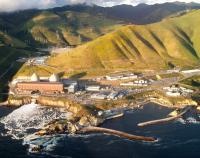
An historic agreement has been reached between Pacific Gas and Electric, Friends of the Earth (FOE), and other environmental and labor organizations to replace the Diablo Canyon nuclear reactors with greenhouse-gas-free renewable energy, efficiency, and energy storage resources. FOE says the agreement provides a blueprint for fighting climate change by replacing nuclear and fossil fuel energy with safe, clean, cost-competitive renewable energy.
-
-
U.S. court asked to block restart of aging, damaged Indian Point nuclear reactor
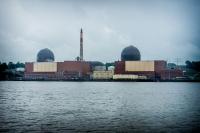
Friends of the Earth and other environmental organizations have filed an emergency petition with the United States Court of Appeals for the District of Columbia Circuit asking that the court compel the Nuclear Regulatory Commission to prevent Entergy from restarting an aging Indian Point nuclear reactor which was found to have unprecedented parts failure in its critical core cooling system. Entergy, the owner and operator of Indian Point, has repeatedly stated that it intends to start the reactor within days. The Indian Point reactors’ licenses expired in 2013 and 2015, respectively, and the plant is operating beyond its 40-year life span while the NRC considers whether to extend the license for an additional twenty years.
-
-
New material promise to make nuclear fuel recycling cheaper, cleaner
Researchers are investigating a new material that might help in nuclear fuel recycling and waste reduction by capturing certain gases released during reprocessing. Conventional technologies to remove these radioactive gases operate at extremely low, energy-intensive temperatures. By working at ambient temperature, the new material has the potential to save energy, make reprocessing cleaner and less expensive. The reclaimed materials can also be reused commercially.
-
- All
- Regional
- Water
- Biometrics
- Borders/Immig
- Business
- Cybersecurity
- Detection
- Disasters
- Government
- Infrastructure
- International
- Public health
- Public Safety
- Communication interoperabillity
- Emergency services
- Emergency medical services
- Fire
- First response
- IEDs
- Law Enforcement
- Law Enforcement Technology
- Military technology
- Nonlethal weapons
- Nuclear weapons
- Personal protection equipment
- Police
- Notification /alert systems
- Situational awareness
- Weapons systems
- Sci-Tech
- Sector Reports
- Surveillance
- Transportation
Advertising & Marketing: advertise@newswirepubs.com
Editorial: editor@newswirepubs.com
General: info@newswirepubs.com
2010-2011 © News Wire Publications, LLC News Wire Publications, LLC
220 Old Country Road | Suite 200 | Mineola | New York | 11501
Permissions and Policies
Editorial: editor@newswirepubs.com
General: info@newswirepubs.com
2010-2011 © News Wire Publications, LLC News Wire Publications, LLC
220 Old Country Road | Suite 200 | Mineola | New York | 11501
Permissions and Policies
